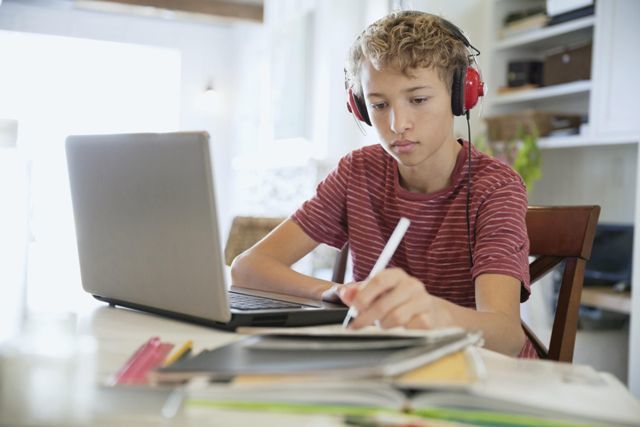
Technology has a unique way of bringing some boring tasks back to life. Book reporting has been related to boredom. In some cases, this boredom ends up killing a learner’s love of reading. How then can tutors monitor the student’s understanding of learning materials in a manner that is more exciting yet efficient?
As boring as they may be, book reports are a valuable part of assessing different skills such as; writing skills, comprehension, and critical thinking. With new digital equipment and ideas, there are different ways through which book reporting can be done in a more captivating manner. Read on to know some of the ways through which technology can be used to enhance book reports.
Creating a Short Video Clip about the Book
Thanks to technology, we now have a number of tools which can work both online and offline to create short movie clips. After reading a certain book, teachers can ask students to create an interview or short movie involving different characters that have been featured in a book. Alternatively, students can be allowed to act-out different chapters of the book as they are recorded. This is an exciting activity that will leave all learners yearning for better understanding of the book in order to provide excellent casts.
Creating Cartoon Versions of Completed Books
Cartoons and animations are fun to watch. Students can use some tools like Pikikids to create a little fun in book reporting. Using the cartoon creating apps and software, they can come up with a brief summary of what is entailed in a book they just read. Cartoon reporting is especially fun for boy students. In their cartoon clips, learners should be asked to introduce all the main characters as well as a cast of any arising problems and how they were solved in the book.
Designing Virtual Posters
Virtual posters are meant to give anyone who looks at them an idea of what to expect in the main item. Take movie posters, for instance, a short glance at them gives you enough information on the genre of the movie, title, and the main actors among other things. Similarly, students can use digital tools to create a book poster. Here they can capture details such as book title and the author. They can also introduce pictures relating to the book and a captivating slogan that will portray the book as nice read.
Creating Audio Book Reports
Take away the book, illustrations, and images. Let the students use their own choice of words to convey what they gathered from a book. This is a task that can be challenging but very exciting for the learners. It pushes their creativity by forcing them to think beyond the obvious. It’s also an exciting way of assessing comprehension.
Audio book reports can cite specific events in a book and be recited as monologues. Students can then go on to explain why these scenes are important.
Establishing a Website for Book Reporting
Think of a website that supports digital elements such as images, GIFs, video clips, and audios. Then put the learners at a liberty of choosing the most preferred method of reporting what they understood from a book. With a book reporting website, learners can write blogs reviewing different books. They can bring more life to it by inserting a digital element of their choice. Learners with website knowledge can be allowed to build their book reporting websites from scratch while newbies can use content management system because coding can pose a challenge.
Creating a Virtual Bookshelf
Virtual bookshelves are a great alternative to book reports and reading logs. Those are technological platforms through which learners can display the books that they have read. Shelfari is one such site that allows learners to interact with other learners and teachers. Through such platforms, students can post and review books that they have read and discussed together. Tutors can motivate learners to form a book club where they can read given books together and review or recommend them thereafter.
Making Slideshows of the Book
Students can be asked to make sequential slideshows of a book they have read. The slides will be a summary of the major events in a book. Though slideshows cannot capture everything that happens in a book, they will help the student improve his writing and reporting skills.
Set Timelines and Discuss Them
Learners can be asked to read certain pages of a book by a set timeline and then discuss them together in a group. Technology has made group discussions so much easier noting that learners can now hold an online discussion on different social media platforms such as Facebook, Whatsapp, and Twitter. Together with the students, the teacher can state when they will discuss the set timelines as a group. This allows for a better understanding as the learners get enough time to comprehend different sessions of the book one at a time.
Creating Book Trailers
Like in movie trailers, students can design simple book trailers that will help create an image of what the book is all about. These trailers should be designed using images and sound tracks chosen by the learner basing on their own understanding. The students should be allowed to express their creativity and understanding of the book the best way they know how.
All clips are better saved in MP4 formats as these will be supported by most devices including smartphones.
Conclusion
Putting the above refreshing techniques into practice can help both the teacher and students in reading comprehension. As seen above, book reports don’t have to be lifeless. Spice up book reporting with the above technology tips and you are sure to have a more enjoyable experience.
